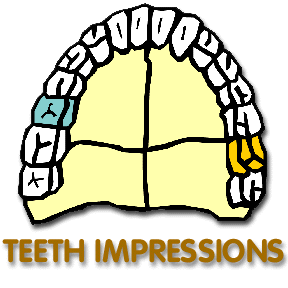

|
Forensic dentists assist in crime solving by studying teeth and teeth impressions. Dental records are often used to identify people. Because teeth are one of the hardest substances in the human body, they are frequently well preserved. Dental x-rays or records showing fillings, position of teeth, etc. can help forensic dentists find a match of teeth to the individual. Eighty percent of the time teeth impressions are used to identify unknown victims. As a forensic dentist you will have the chance to match teeth impressions to discover who took the bite?
|
Materials Lists
Practice being a forensic dentist by leaving the room. One student in the room will take a bite of thick cheese or thick chocolate. See if you can identify the individual who took the bite by comparing the impressions with the bite in the cheese or chocolate. |
|||||||||||||||||||||||
|
|||||||||||||||||||||||||
© 1996 - 2011 Linda C. Joseph
All Rights Reserved
All CyberBee Graphics are Trademarked
Graphics by
Darlene Vanasco/Creative Director
Erika Taguchi/Designer & Illustrator
Hosting Provided by Iwaynet
